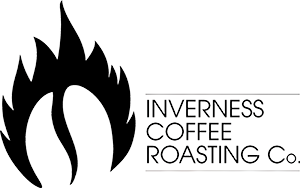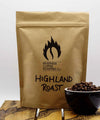RECENT POSTS
ARCHIVE
- April 2023
- December 2021
- May 2021
Guest Post: Not all coffee is Espresso, but all Espresso is coffee!
Sarah Francis
Apr 21, 2021
A big Welcome to Scott Deans, from Above Average Coffee a site for follks who want to improve their home coffee making skills. This is our first guest post on the Inverness Coffee Roasting site. Enjoy and let us know if you’d like to see more guest posts.
“Hello”
I’m Scott from Above Average Coffee With a love of coffee, I wanted to learn to make my own brilliant coffee at home. As it turns out, it’s easier than you might think to seriously improve your brew and make it well above average. Above Average Coffee is partnering with Coffee Roasting Co to explain why ……
Not all coffee is Espresso, but all Espresso is coffee!
There’s a confusing statement.
When you head into your favourite coffee shop it can be overwhelming to see the list of different coffee types that are available. This confusion extends to when you’re trying to buy fresh coffee to brew at home and you notice some beans come labelled as ‘espresso’. b
So what is espresso coffee, or what causes coffee to be labelled as this?!
Are You Saying Espresso Isn’t Coffee?
Not at all!
The coffee-making world is baffling and it can be a lot to get your head around if you’re not familiar with the many brew methods available. To really understand the espresso we need to properly define what it is.
What Defines An Espresso?
Espresso is a coffee brewing method developed in Italy.
There is one special aspect that makes espresso unique from all other brewing methods: It is brewed using hot water at high pressure. 9 Bars of pressure, in particular, to extract all those delicious flavours from the coffee beans. Whereas other brewing methods only use hot water at atmospheric pressure (which is only about 1 Bar).
While the industry standard is 9 Bars, some espresso machines can produce 15 bars or more.
This high pressure means that the brewing process is rapid and can take just under 30 seconds to produce that syrupy shot.
Espresso is thicker than a filter coffee with a foamy layer of natural fats suspended on the surface. This is called the ‘crema’ and is often used as an indicator for a well-extracted ‘shot’. The espresso is served in single shots (1 ounce) or double shots (2 ounces) and has a very high caffeine content per volume at around 60mg per ounce.
It has a rich, dark taste and is often considered too strong to drink alone (unless you’re a well-seasoned coffee lover!). For this reason, it can be served topped up with hot water to give an americano or with steamed milk to make a latte, cappuccino or any other speciality coffee.
Espresso Beans vs Regular Beans
To begin making any kind of coffee you need two ingredients. Coffee beans and water. The type of beans chosen has a massive impact on flavour and aromas released and this is why there are so many different kinds of beans out there.
Coffee beans contain a valuable mix of flavours and these tastes start at the coffee plantation. The altitude, climate, and variety of bean used to influence its basic flavour profile. By the time the beans arrive at the roaster, their defining qualities are already in-built, locked up, ready to be released by the roasting process.
Now, up to this point, it has been the same procedure for all coffee beans, whether you intend to brew as espresso or not
The roasting process is the next step that really brings the flavours alive. A lighter roast preserves acidity in the beans and the more delicate fruit and floral notes. A light roast is achieved by using a lower temperature or shorter roast time.
Dark roasted coffee beans act to break down a lot of the acidity and produce more single note flavours like chocolate, burnt caramel, or nutty tones. It also releases more fats and oils giving the beans a shiny appearance.
The roasting process is often regarded as a spectrum from very light to very dark with different levels suiting different brew methods. For espresso coffee, a darker roast is often chosen as the rich flavours shine through and the oils make for a thicker crema on top.
An important point here is that there’s no rule book for bean variety or roast darkness when it comes to brewing espresso so coffee beans sold as “espresso beans” can vary a lot between brands.
Single Origin vs Blend
Single-origin coffee beans mean that all the beans in the mix are from the same batch so have a shared origin on their particular coffee plantation. A blend of beans is a bit of a pick-n-mix with different flavoured beans added to complement each other.
Whilst single-origin beans get a good press and are often considered ‘high-quality’ it’s important to remember that when you brew coffee to give an espresso you amplify the flavours. This can cause imbalances in flavours for certain single-origin bean varieties and they may be better suited to a pour-over or similar brew method.
A coffee blend can be better for espresso-making as the mix of bean flavours produce a better balance but there is a small area of debate with this mixing.
A blend has a strong potential to gain a seriously consistent brew, but this is dependent on the skill of the roaster. On the other hand, a single-origin coffee does not have this human element but beans can vary over different harvest seasons and be difficult to replicate the same crop batch.
You’re left with the option of leaving the consistency up to nature or the roaster; blending beans is a balance of art and science. Inverness Coffee Roasting Co has this fine blending balance down to a tee.
Just like the variety of beans and roast process, single-origin vs blend comes down to personal taste preferences and which option you feel produces the best espresso.
Grind Size
The coffee beans need to be broken down into small particles for them to release their flavour into the coffee liquid and this step is critical to get right. For best results, espresso needs finely ground coffee. Espresso coffee is often sold labelled for this use because it is ground to a good size for this brew method.
The best way to get the most out of your coffee is to buy whole beans and grind them at home. This keeps them super fresh and you get all the delicious coffee flavours the beans have to offer. The only way to grind coffee evenly enough to ensure a good extraction is to use a burr grinder. The burrs allow you to set them precisely to ensure your coffee is ground up uniformly.
As with every other variable, there isn’t a hard and fast rule for the exact grind size needed for espresso. The type of coffee, as well as the brew method, can hugely influence the grind size needed so it often takes a bit of trial and error to find the ideal setting.
The best way to figure out the grind needed for your espresso machine and coffee beans chosen is to start with a setting fairly close to the finest one on your grinder. Brew a shot of espresso and see how long it takes. If it’s very thick and takes longer than 30 seconds then the grind is too fine. If the coffee is thin and runs through very quickly then you’ve gone too coarse.
Brew Method
Espresso can be brewed using a variety of coffee machines from manual lever options right through to super-automatic ones that only require you to press a button. The most important feature of any espresso machine is that it must be able to reach at least 9 bars of pressure. Espresso makers vary a lot in the steps involved and the tasks they can carry out but the pressure produced has got to live up to these expectations for it to brew a ‘true espresso’.
The Moka pot, also known as the stove-top espresso maker, and the AeroPress both try to claim to be espresso makers but they can only produce around 1.5 to 2 Bars of pressure. While neither of these options can produce enough pressure to extract a “real” espresso, they can still produce a great “espresso-like” cup of coffee. Just not as strong, thick, or frothy.
Serving
Espresso can be served black as a single or double shot with some people preferring to add some sugar or a squeeze of lemon to balance the flavours. There are lots of options when it comes to added extras and coffee shops often have a huge range of drink options that are based around an espresso.
Add hot water and you have an Americano, steamed milk gives a latte and steamed milk with milk foam gives a cappuccino or macchiato.
The time taken to brew espresso can also be altered to give a range of drinks from a ristretto (with a shorter extraction time of about 15 seconds) to a lungo where the coffee is extracted over a longer period and this produces a larger volume drink.
Other Ways To Brew Coffee
Now that we have covered espresso in a lot of depth, how else can you brew coffee?
The list of other brew methods is vast. There’s the French press, pour-over set up, drip coffee maker, coffee percolator, Moka pot, Aeropress, Neapolitan flip coffee pot, cold brew coffee makers and many more.
Each different brew method comes with its own set of advantages and produces a unique way to enjoy coffee. It’s up to you to give them a go and see which one suits you the best.
Final Thoughts
There’s an art to brewing coffee and the options available to try are vast. Espresso is a brewing method that uses both high-pressure and hot water to make a concentrated shot of coffee. This means that although espresso is a type of coffee, you can’t call any other brew of coffee an espresso unless high pressure is used.
It’s a bit of a “not all fingers are thumbs” scenario.
Not all coffee is espresso, but all espresso certainly is coffee.
← Older Post Newer Post →
BEST SELLING COFFEE
We’re passionate about the craft of roasting coffee beans by tasting and nurturing flavours that can be captured for our quality coffees! If you would like to order something that isn’t listed please get in touch.
GET IN TOUCH WITH US
Information on where to find us, or if you would like to reach out to us with any questions.







